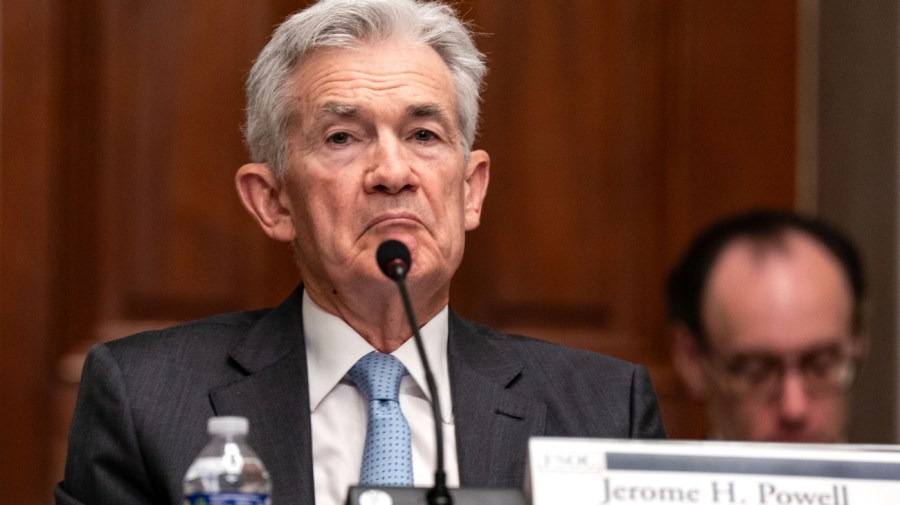
The Federal Reserve has confronted a challenging economic environment since the COVID-19 pandemic struck four years ago. First, it was criticized for acting too slowly to contain the spike in inflation in 2021-2022, and then many observers feared it would weaken the economy when it played catch up.
While the risk of recession has lessened, inflation has been sticky of late and investors are questioning whether the Fed’s forecasts that call for it to approach the 2 percent target will be realized.
Amid these developments, investors’ perceptions about U.S. monetary policy have shifted markedly. At the start of this year, the Treasury bond market was pricing in six cuts in the Fed funds rate, or twice as many as Fed officials anticipated. Now, for the first time since the Fed began tightening policy, investors expect fewer rate cuts than Fed officials envision.
If this disparity were to persist, it could cause investors to doubt the Fed’s commitment as an inflation fighter at some point.
This prospect has caused the Washington Post’s editorial board to question whether Fed officials should make their interest rate projections public, considering that “Fed officials have been notoriously bad forecasters over the years.”
The editorial board argues that the decision to make the “dot plot” public in January 2012 was a way for the Fed to convey to the market that it would maintain rates at a low level for a significant time after the 2008 financial crisis and Great Recession. However, with the Fed now in inflation-fighting mode and interest rates at a 20-year high, the dynamics are entirely different:
“No matter how many times Mr. Powell says that the dot plot is just a forecast and not a policy plan, the dots are being taken literally — which ties its hands,” the board wrote.
Another suggestion is that the Fed should incorporate scenario analysis into its public communications.
According to a Bloomberg report, former Fed Chair Ben Bernanke has recommended that central banks publish both central and alternative scenarios so “the public will be able to draw sharper inferences about the reaction function and thus better anticipate future policy actions.” The need to consider alternative scenarios is especially relevant when the economy is highly unpredictable and there is a need to convey a wider range of views.
These suggestions are intended to improve the quality of the Fed’s communications with the public. However, they do not address why Fed officials significantly underestimated the acceleration of inflation that began in 2021.
Economists Mickey Levy of the Hoover Institution and Charles Plosser, former president of the Federal Reserve Bank of Philadelphia, assess what happened in a presentation titled “The Fed’s Strategic Approach to Monetary Policy Needs a Reboot.”
Levy and Plosser acknowledge that the Fed’s long-term strategic plan formulated in 2012 was balanced and clear. However, in the ensuing years, officials became concerned that the nominal interest rate was approaching the Fed’s effective lower bound of zero. The reason: The Fed’s preferred measure of inflation — the personal consumption deflator — was below the 2 percent target for much of the decade, and the Fed’s estimates of the natural real interest rate showed a declining trend.
The Fed subsequently introduced the concept of flexible average inflation targeting (FAIT) in its 2019-2020 strategic review. The intent was to make up for inflation below 2 percent by aiming for it to run “moderately above 2 percent for some time.” The Fed also broadened its mandate to aim for maximum employment, which meant it would try to increase the labor force participation rate while keeping unemployment low.
According to Levy and Plosser, these strategic changes contributed to the Fed underestimating the risk of inflation and failing to raise interest rates when inflation expectations became unanchored. The Fed’s reliance on forward guidance (via the dot plots) without raising interest rates, in turn, increased inflationary expectations.
One of their recommendations for the upcoming strategy review is that the Fed should correct the asymmetries and complexity of the flexible average inflation targeting and return to a clear 2 percent target. Another is to thoroughly review the inflation process and dynamics in light of the inadequacies of the current time-variant Phillips Curve approach.
They also believe that Fed decision-making has become too discretionary and that it should incorporate systemic rules such as the Taylor Rule as guides to policymaking.
My take is that one of the Fed’s greatest achievements was to reestablish its credibility as an inflation fighter during Paul Volcker’s tenure as Fed chair and to maintain it over the next four decades. The spike in inflation in 2021-2022 represented the first test of the Fed’s commitment.
Unfortunately, the Fed was predisposed to make job creation its top priority even as the economy rebounded once businesses and schools reopened and fiscal policy turned highly expansionary.
The Fed mistakenly adopted the same policy response to the pandemic as it did to the 2008 financial crisis even though they were very different types of shocks.
With inflation currently running above 3 percent, the Fed’s principal goal today should be to finish the job and ensure that inflation returns to its stated target.
In a debate this week, two prominent economists, Glenn Hubbard and Lawrence Summers, agreed that the Fed faces a considerable challenge getting there. But this is not merely a fanciful wish of economists. It is also what the American public has been clamoring about for the past three years.
Nicholas Sargen, Ph.D., is an economic consultant for Fort Washington Investment Advisors and is affiliated with the University of Virginia’s Darden School of Business. He has written three books including “Investing in the Trump Era; How Economic Policies Impact Financial Markets.”














